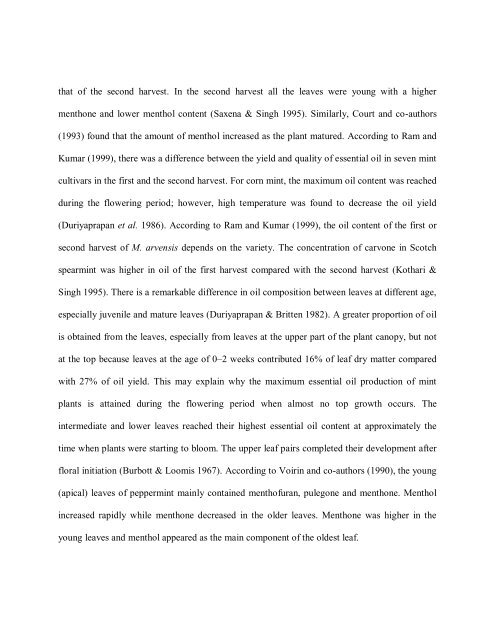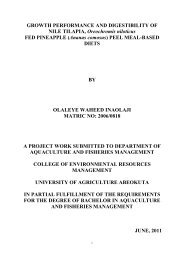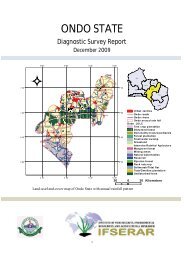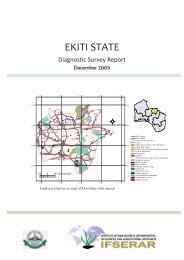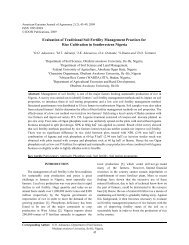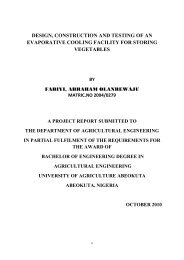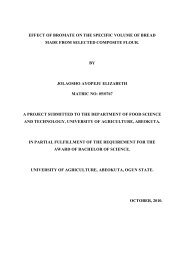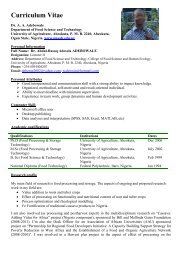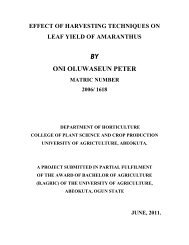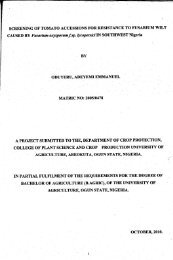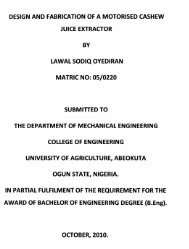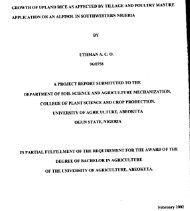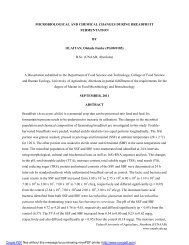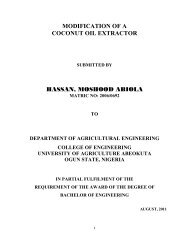EFFECTS OF ORGANIC FERTILIZERS ON GROWTH AND YIELD ...
EFFECTS OF ORGANIC FERTILIZERS ON GROWTH AND YIELD ...
EFFECTS OF ORGANIC FERTILIZERS ON GROWTH AND YIELD ...
You also want an ePaper? Increase the reach of your titles
YUMPU automatically turns print PDFs into web optimized ePapers that Google loves.
that of the second harvest. In the second harvest all the leaves were young with a higher<br />
menthone and lower menthol content (Saxena & Singh 1995). Similarly, Court and co-authors<br />
(1993) found that the amount of menthol increased as the plant matured. According to Ram and<br />
Kumar (1999), there was a difference between the yield and quality of essential oil in seven mint<br />
cultivars in the first and the second harvest. For corn mint, the maximum oil content was reached<br />
during the flowering period; however, high temperature was found to decrease the oil yield<br />
(Duriyaprapan et al. 1986). According to Ram and Kumar (1999), the oil content of the first or<br />
second harvest of M. arvensis depends on the variety. The concentration of carvone in Scotch<br />
spearmint was higher in oil of the first harvest compared with the second harvest (Kothari &<br />
Singh 1995). There is a remarkable difference in oil composition between leaves at different age,<br />
especially juvenile and mature leaves (Duriyaprapan & Britten 1982). A greater proportion of oil<br />
is obtained from the leaves, especially from leaves at the upper part of the plant canopy, but not<br />
at the top because leaves at the age of 0–2 weeks contributed 16% of leaf dry matter compared<br />
with 27% of oil yield. This may explain why the maximum essential oil production of mint<br />
plants is attained during the flowering period when almost no top growth occurs. The<br />
intermediate and lower leaves reached their highest essential oil content at approximately the<br />
time when plants were starting to bloom. The upper leaf pairs completed their development after<br />
floral initiation (Burbott & Loomis 1967). According to Voirin and co-authors (1990), the young<br />
(apical) leaves of peppermint mainly contained menthofuran, pulegone and menthone. Menthol<br />
increased rapidly while menthone decreased in the older leaves. Menthone was higher in the<br />
young leaves and menthol appeared as the main component of the oldest leaf.


